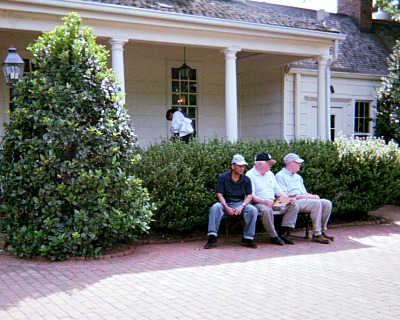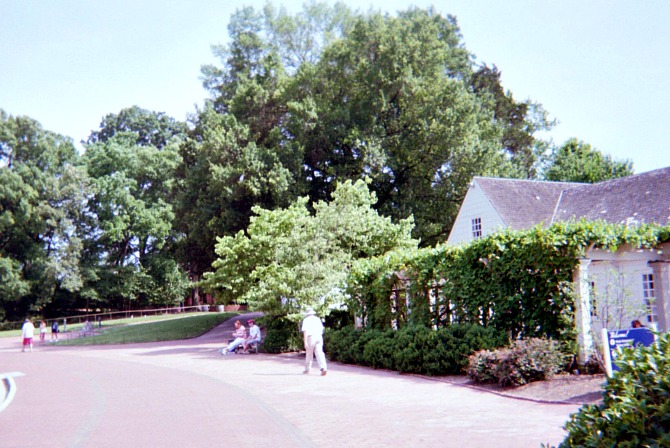George Washington farewell address as President
George Washington farewell address to the nation concludes his two terms as first President of the United States. He had no competition for the office of the President of the United States. He was respected and trusted by all. His list of accomplishments before becoming President demonstrates this.
George Washington was an asset to the new nation. Without his leadership there would have been no Revolutionary War army or no Constitution. He was first in war and in peace. No one else had as much influence on his fellow countrymen as he did.
George had no desire to become President of the newly formed United States. He was tired of being in the public limelight. According to George he had “no wish beyond that of living and dying an honest man on my own farm.”
He wrote to his friend Benjamin Lincoln. “Nothing in this world can ever draw me from [retirement] unless it be a conviction that the partiality of men had made my services absolutely necessary.” He hoped this would not be the case, but even if it was, he would hold office only as long as he was needed and retire “as soon as my services could possibly with propriety be dispensed with.”
After his serving his second term as President of the United States, he was ready to deliver the George Washington farewell address to the nation.
George Washington elected first President of the United States
When Washington received the news of his election, he wrote to Lafayette, his French comrade in arms. “My difficulties increase and magnify as I draw towards a period when, according to the common belief, it will be necessary for me to give a definite answer in one way or another.”
The new government was planned to begin operation on March 4, 1789. There were only eight senators and thirteen representatives present in New York on that date. By the first day of April, the House of Representatives had a quorum to begin its official organization. By then, General Washington did overcome his hesitation and reluctance to accept the office of the presidency.
On the sixth day of April the Senate had its first quorum and was ready for the official opening and counting of the electoral votes in the presence of members of both houses of Congress. John Langdon, the senator from New Hampshire was elected “president for the sole purpose of opening and counting the votes for President of the United States.” After “it appeared that George Washington Esq. was elected President,” Charles Thomson, the “perpetual secretary” of the old Continental Congress, was appointed to take c official notification to Washington who was living at Mount Vernon, Virginia.
After his acceptance of the election, Washington’s journey from Mount Vernon to New York turned into an ovation for his entire journey. Washington was greeted with joyous enthusiasm all along his traveling route. He took part in banquets and listened to speeches. He was accompanied during his ride between mounted escorts with shining sabers in every city he passed by.
Deeply moved by his reception, Washington wrote to Edward Rutledge. “I greatly apprehend that my countrymen will expect too much from me. I fear, if the issue of public measures should not correspond with their sanguine expectations, they will turn the extravagant (and I may say undue) praises which they are heaping upon me at this moment, into equally extravagant (though I fondly hope, unmerited) censures.”
The Inauguration day was planned for April 30, 1789. On the morning of April 30, 1789, religious services were performed in all the churches of the city of New York. Arriving at the Federal Building, George Washington walked into the Senate Chamber where he was greeted by Vice President Adams who was so moved by the occasion he could hardly speak. When he was finished with his welcome, he led George to the portico of the building. Members of Congress followed them.
Chancellor Livingston, the Chief Justice of the New York judiciary, stepped forward to administer the oath of office. “I do solemnly swear that I will faithfully execute the office of President of the United States, and will, to the best of my ability, preserve, protect and defend the Constitution of the United States.” The newly elected President George Washington, repeated the words, adding at the end, “So help me God.” Then Livingston called out, “Long live George Washington, President of the United States!”
Fisher Adams, a member of the House from Massachusetts who was a good Federalist and an admirer of Washington, offered a description of the event. Of Washington he wrote, “His aspect grave, almost to sadness; his modesty, actually shaking; his voice deep, a little tremulous, and so low as to call for close attention; added to the series of objects presented to mind, and overwhelming it, produced emotion of the most affecting kind upon the members.”
The inaugural address was short. The speech President George Washington read lasted less than ten minutes. He promised to carry out the powers of the Presidency as defined in the Constitution. At the conclusion of the address, Washington accompanied by the members of Congress, walked across the street to St. Paul’s Chapel, where prayers were offered for the new government.
That night the entire city celebrated. Fireworks lit up the skies. The people sang, danced and cheered. The new country had its president, the first to take office under the Constitution. This was an event worthy of all the celebration.
The George Washington farewell address came at the end of his second term as President
In September 1796, worn out by burdens of the presidency and attacks of political foes, George Washington announced his decision not to seek a third term. Alexander Hamilton and James Madison helped write the George Washington farewell address. It was Washington’s political testament to the nation. It was designed to inspire and guide future generations. The address also defended his administration’s record. It was presented as a classic statement of Federalist doctrine.
Washington’s principal concern in the George Washington farewell address was for the safety of the eight-year-old Constitution. He believed that the stability of the Republic was threatened by the forces of geographical sectionalism, political factionalism, and interference by foreign powers in the nation’s domestic affairs. He urged Americans to subordinate sectional jealousies to common national interests.
The George Washington farewell address was never publicly delivered. It first appeared on September 19, 1796, in the Philadelphia Daily American Advertiser and then in papers around the country.
In January 1862, with the Constitution endangered by civil war, a thousand citizens of Philadelphia petitioned Congress to commemorate the forthcoming 130th anniversary of George Washington’s birth by reading out loud the George Washington farewell address on the morning of that day in Congress. Both houses agreed and assembled in the House of Representatives’ chamber on February 22, 1862. The George Washington farewell address was read by the Secretary of the Senate John W. Forney.
The George Washington farewell address was first read in regular legislative sessions of the Senate in 1888 and the House in 1899. The House continued the practice until 1984. Since 1893, the Senate has observed Washington’s birthday by selecting one of its members to read the George Washington farewell address.
For more information see The Glorious Burden by Stefan Lorant. Please visit this link to read the George Washington farewell address in its entirety.










